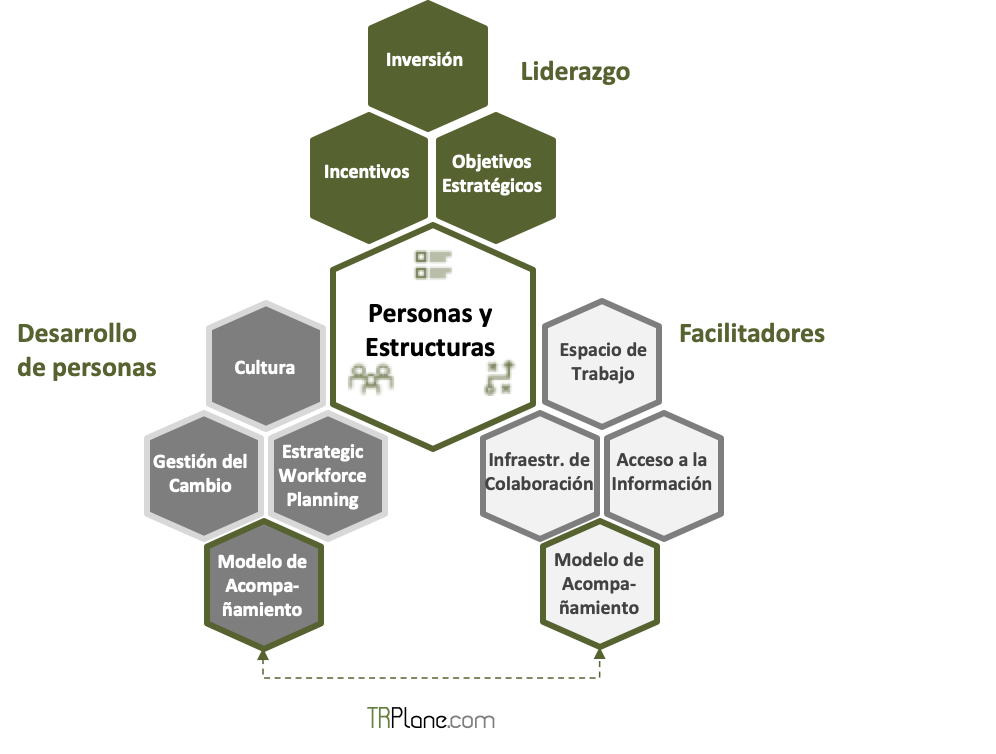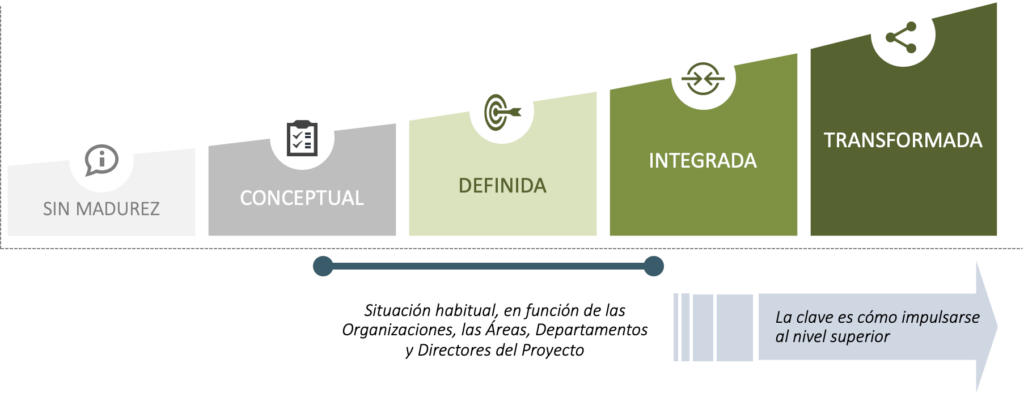Before starting the transformation process, the organization has to make available the basic means necessary to be able to carry out an initial approach and, on the other hand, be aware of the degree of transformation in which it finds itself in order to assume the correctly dimensioned measures to be planned.
Initial approach
For the evolution of the person, it is necessary to ensure the availability of basic services grouped into 3 axes: Leadership, Facilitators and People Development.

Leadership
It establishes the focus, the investment in the objectives, as well as the incentive model that changes in a multi-channel environment. In order to assume a realistic income statement, a change is required in the way of allocating expenses, from a view of general expenses to an allocation of expenses associated with each product or service.
On the other hand, the leaders of the process transmit the culture throughout the organization, constantly review the progress and goals taking into account internal and external information, and establish priorities in the short, medium and long term.
The main considerations to know if the means are available to lead the process would be
- The responsible structures have adequate and complementary incentives with the objectives of the organization?
- Are the investment and resources enough?
- It is aligned with the global strategy of the Organization
Facilitators
They act as accelerators by integrating/enhancing joint operations and allowing access to business process data.
The physical design of the spaces and the collaboration infrastructures are a great support to make the execution more efficient.
- Can the actors in the environment access the information?
- Are the tools we have available and do they promote the collaboration that Digital Transformation requires?
- Does the design of spaces promote or hinder the target behaviors?
people development
The people who are part of the organization must be totally or partially trained to take on the new challenges and form part of the structure of the future.
To know the scope and needs, there are three initial activities to develop:
- Strategic Workforce Planning. Definition of the structure of the future, identification of new departments, functions, profiles and necessary skills by position while the current state would be inventoried and the differences between the current and future situation are established and the appropriate professionals are detected.
- Culture. Transmission, review and unification of the necessary culture and knowledge: skills, quality, customer focus, collaboration, innovation, etc.
- Change management. A management of constant change, with continuous improvements and with the participation of all the members of each initiative as well as customers, society and the market.
The questions to be answered at this point would be:
- Does the Organizational Model have the capacity to integrate Strategic Workforce Planning in the coming months?
- What are the key considerations of the operating model?
- Can the Organizational Model complement and promote culture?
- Are employees involved in making decisions or creating plans for change?
El escort model ensures the fit of people in the strategy, the new economy and customer habits.
Digital Maturity
Knowing what phase the organization is in will allow us to know a starting point from which to approach the process. To know the starting point does not require a dense inventory process, since, on the other hand, organizations are fully aware of their current capabilities.

Without maturity. Digital change may have been discussed in some areas, but there is no implementation strategy.
Conceptual. The digital transformation may have been applied in some project but without a vision between departments or a corporate strategy.
Defined. The strategies are defined from experiences in pilot projects. There is a basic awareness of digital development within the Organization, system plans are made, but the existing models are maintained in a strengthened way.
Integrated. Digital content is integrated into the entity's model accompanied by developed and implemented strategies. The main processes and products/services are digitized.
transformed. Appear new models of business, service or product thanks to the digitization of the main processes. New control models and new transversal structures are required. Corporate culture has embraced lasting change




